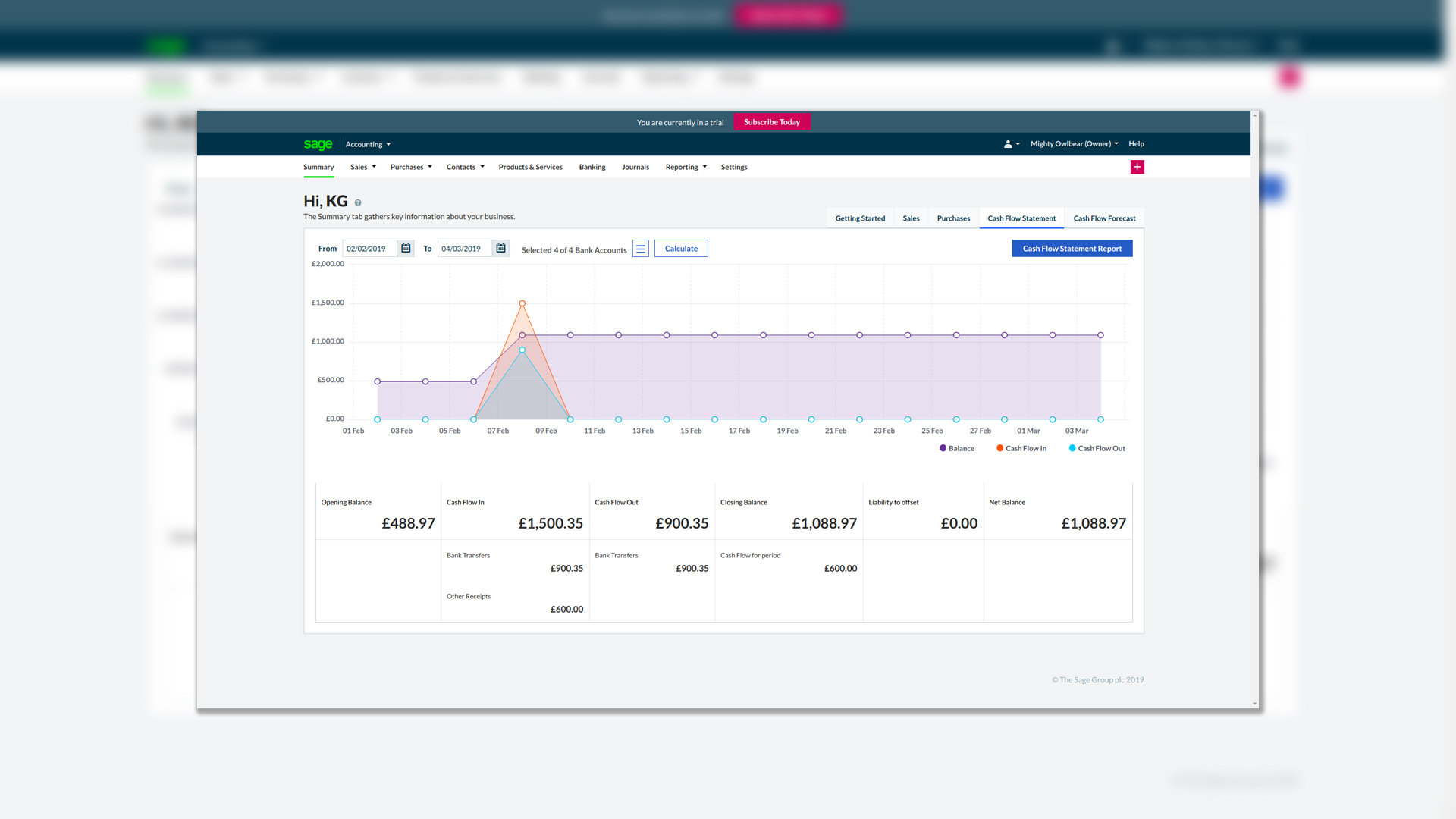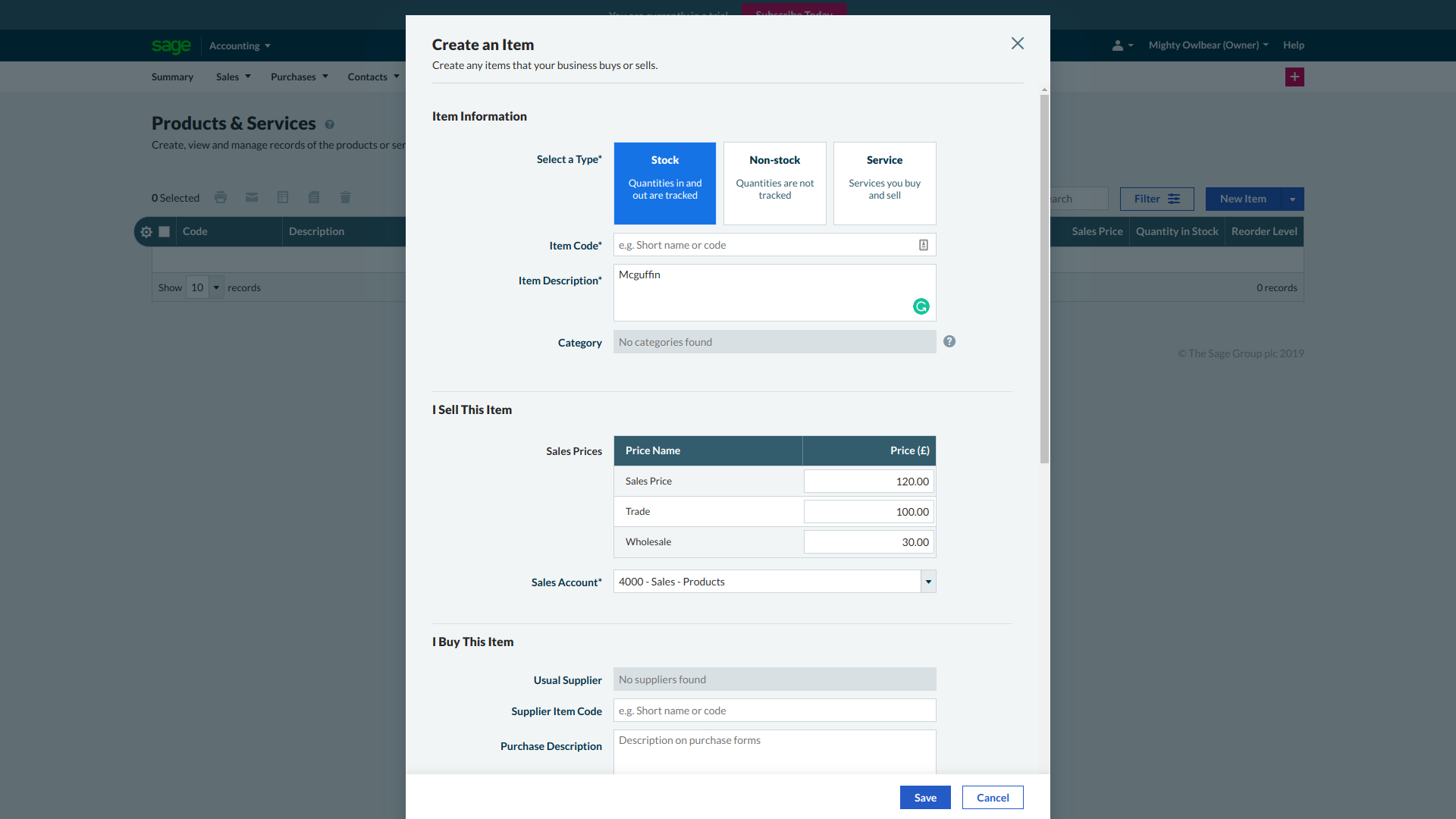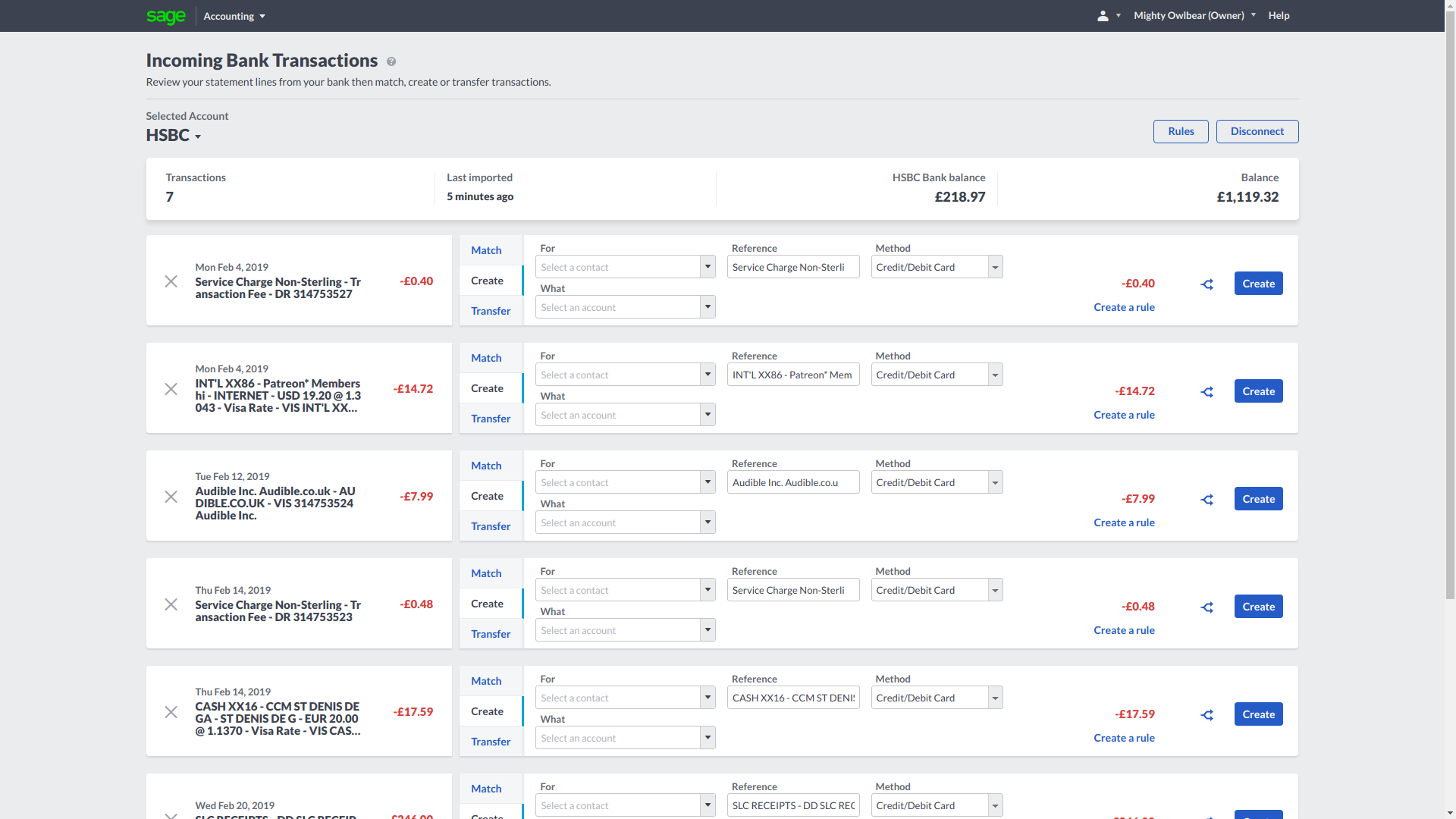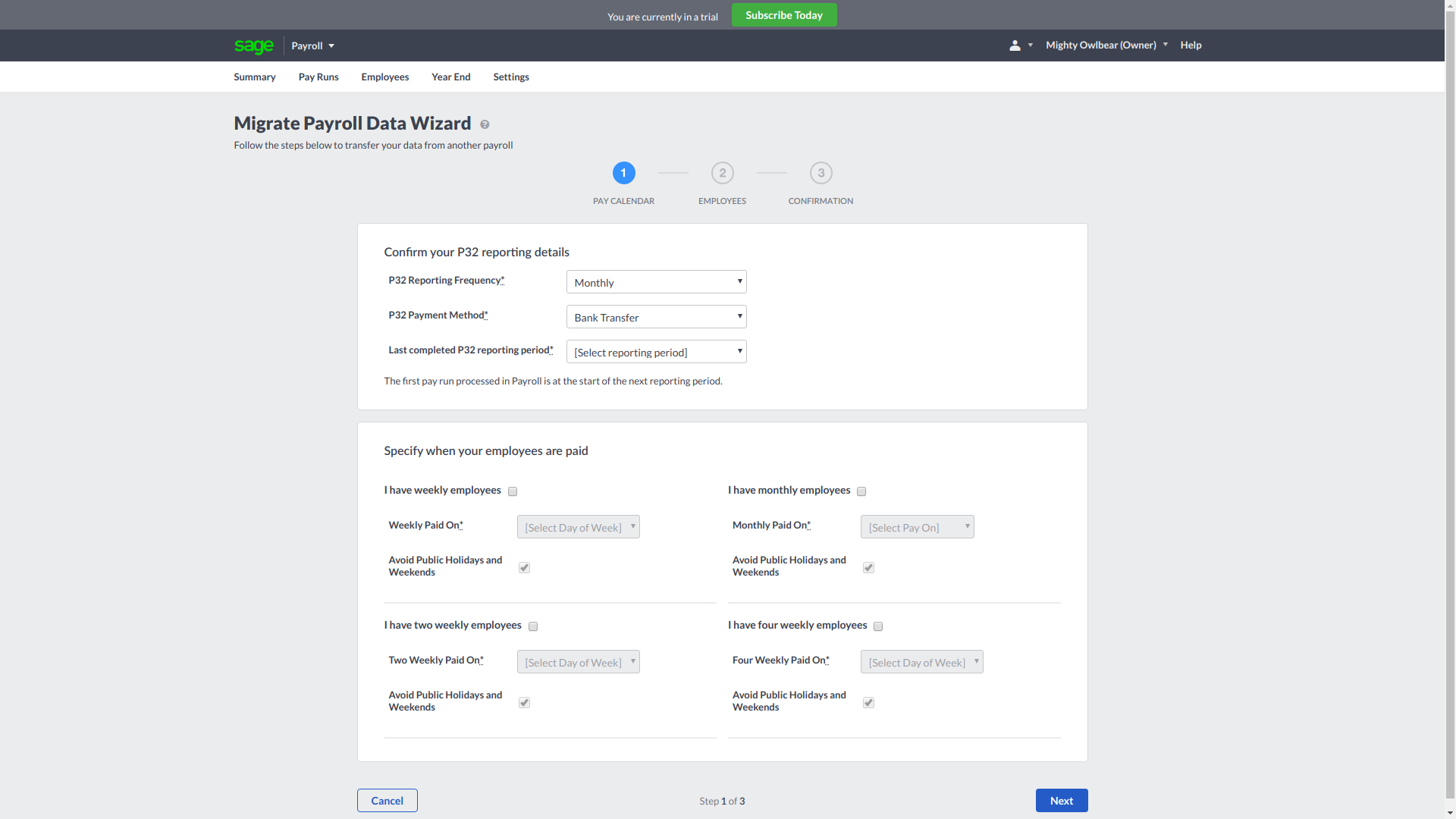Sage Accounting review: A capable but imperfect accounts package
Sage’s self-service accounting software is a good all-rounder, but leaves something to be desired

Sage is a well-established name in accounting software, and most small businesses will find that Sage Accounting meets their needs. However, these SMB subscriptions, although competitively priced, lack some key features, such as support for timesheets and non-GBP denominated bank accounts.
-
+
Clear and easy-to-use core accounting; Data is hosted in Dublin
-
-
Payroll is charged separately in five employee blocks; Lacks support for timesheets, non-GBP bank accounts, PayPal or external web app integrations

Sage is among the accounting software providers that's been working with HMRC to ensure that it's all set up for the introduction of the government's new Making Tax Digital at the beginning of April.
While most of Sage's rivals in the world of cloud-based SMB accounting suites have three or more tiers for businesses of different sizes and requirements, Sage keeps it simple with just two core subscription options, both of which allow you give your accountant full access free of charge.
Priced at 10 per month, Sage Accounting Start is designed to handle invoicing, track payments and file VAT returns. It's a bit of a jump to the full 22 Sage Accounting suite, but for that extra money you get the ability to create quotes and estimates for your customers, record purchase invoices to make it easier to monitor your outgoings and reclaim VAT, and keep on top of your books with a cashflow statement to show what money you have incoming and outgoing.
It's worth noting that many of these features come as standard in all tiers of some rival accounting suites, such as QuickBooks and Xero, although these have other limitations on their entry-level tiers. In this review, we'll focus on the full Sage Accounting suite, rather than its cut-down sibling for microbusinesses.
This also includes support for multiple currencies, more than one company, remittance notes and statement overviews for customers. If you need payroll features, including support for pensions and PAYE tax filing, you'll have to subscribe to Sage Payroll, starting at 6 a month for companies that pay up to 5 employees. A variety of introductory offers and Accounting/Payroll bundles are available.
It's also worth noting that Sage hosts all UK and European users' data at Amazon's Dublin datacentre in Ireland. This is covered by the UK's decision to regard all EEA member states as meeting adequate data protection requirements, even in the case of a no-deal Brexit.
Sage Accounting review: Setup and configuration
When you sign up, Sage asks you for some basic information about your business, including your contact details, VAT registration status, and whether you're a sole trader, a partnership, or a limited company.
When you've finished creating your account, you're presented with not just a guided setup wizard, but a whole Getting Started tab, with multiple categories that take you through setting up customers and suppliers, connecting bank accounts and customising the default Chart of Accounts, as well as a number of optional features that depend on your business's specific needs.

Sage's first guided setup suggestion is that you create or import some customer profiles - a CSV template is supplied to help you bulk add existing clients. The customer creation tool helpfully allows you to assign a default sales category on your chart of accounts to each customer. We'd have liked more than two address lines available for UK-based clients, though.
The Customers section of Sage also provides an overview of how much each of your clients owes you, and a statement run button to generate payment reminders summarising all invoices currently due from each customer. Rather than importing full details of every existing invoice when you migrate to Sage, you can set opening balances for customers who're due to pay you.
The guided setup process also advises you to create and set balances for suppliers, view Aged Creditors and Aged Debtors reports to see how much you owe and are owed, add your bank accounts and review the default Chart of Accounts.
An Optional extras section lists a few things that might be helpful to some, but not all, businesses, such as invoice customisation, enabling foreign currency support and creating a list of products or services with fixed charges. Other Summary tabs provide an at-a-glance look at your sales, purchases and cashflow, complete with illustrative graphs - whichever one you last viewed will be open by default next you visit the page.
Sage Accounting review: Banking and reconciliation
The Banking page provides an excellent overview of your finances. Bank accounts can be added manually or via Sage's searchable online banking connection tool, which supports most of the major UK high street and business banks, but few digital challenger banks - Transferwise, ING and Shine are conspicuous by their absence.
We were pleased by how easy it was to add a bank account manually using either sort code and account number or IBAN and BIC. Although you're then prompted to connect to it online, you can opt out of that and upload statements instead. If you don't feel comfortable giving your accounting suite read access to your bank accounts, Sage is definitely a good choice.
Unfortunately, bank accounts in currencies other than GBP are not supported, even though Sage has a multicurrency mode and supports foreign currency transactions using either its own exchange rate or one that you've defined yourself based on your financial service provider's rate and charges.

The banking interface also allows you to reconcile the transactions to your invoices, bills and inter-account transfers. You can create new customer and supplier references as you go, use the Match feature associate them with paperwork that you've already logged, and create rules for easier reconciliation in future.
Once you've assigned each to your satisfaction, you have to click the Create button to the right of each transaction to complete the process. If you accidentally double-import any transactions, a cross on the left lets you discard them. If you use Sage Payroll, you'll also need to manually discard staff payment transactions to avoid logging them twice.
Sage Accounting review: Inventory, tax and payroll
Sage includes basic inventory tracking via its Products & Services interface. Here you can create entries for services and items you provide, classified as either Stock, Non-stock or Service. If you want to track quantities of something, class it as Stock and Safe will automatically track how many of the item you have in stock based on your purchase receipts and sales invoices.
The software also helps you calculate and submit your VAT returns to HMRC under the new Making Tax Digital scheme. In the VAT returns section of the Reports menu, you'll be able to create and automatically calculate your returns based on your invoices filed during the present reporting period. After checking them over, submitting your return is a simple, one-click operation.
Like most accounting packages, Sage charges extra if you need payroll features. Sage Payroll is priced at 6 per month for one to five employees, with other deals to cover more staff. Once you've subscribed, you can easily switch between Accounting and Payroll via a pull-down menu at the very top of the screen.
It's simple to use and clearly documented. Payroll handles PAYE income tax, pension auto-enrolment and deductions such as student loan payments, child support and broader categories that can be used for benefits such as company season ticket loans. It supports multiple weekly and monthly paydays, and includes a relatively painless process for entering the details of existing employees if you're transferring from existing payroll software. Note that this version of Sage Payroll, aimed at smaller businesses, doesn't support timesheets.
Sage Accounting review: Payments, apps, and integrations
Sage supports Stripe for on-invoice credit card payments and can also integrate with Sage Pay. Unlike many rivals, there's no integrated support for PayPal, but if you use the service, it's easy to add PayPal to your bank feed and simply put a payment link in your invoices and emails.
As you'd expect, there's a smartphone app for Android and iOS. It looks great and makes it easy to quickly generate quotes, invoices, payments and receipts (complete with a photo), and log bank transfers on the move. You can also add and access contacts and get an at-a-glance view of the current status of your invoices, outgoings and bank accounts.

Unlike like some rival accounting suites, or indeed Sage 50cloud, Sage Accounting doesn't have a library of modules or extensions to help you connect it to other software you might use. You can link a Google account to automatic export backup copies of invoices and quotes to Google Drive, but that's about the total extent of Sage Accounting's integration with non-Sage products.
Sage Accounting review: Interface
Sage has a powerful range of features, and its menu layout and settings are generally clear. However, font sizes on some pages are small, which can be a problem on higher resolution displays.
Almost all pages display a navigation toolbar to move around the Sage interface and a plus sign at the right of the screen makes it easy to rapidly create invoices, enter receipts, create customers and more. But this vanishes in a couple of places. For example, when you finish matching your incoming bank transactions, the only buttons on offer are Import, to bring in more transactions, or Connect Bank. We had to use the Accounting link in the top bar to get back to the Summary page.
We also noticed occasionally inconsistent support for the browser's back button, which will sometimes send you back multiple pages, rather than to the last screen you were on.
Sage Accounting review: Verdict
Sage has been a dominant force in business accounting for years and, despite some minor user interface quirks, Sage Accounting is very capable. As well as guiding you through everything from invoicing and transaction reconciliation to VAT returns, it has plenty of customisation options for both service and sales-oriented businesses, including basic stock tracking.
Sage Accounting and Payroll lacks a number of features, such as timesheets and project management tools, that we'd either expect to find built-in or available to connect via other services. The lack of support for non-GBP denominated bank accounts is also disappointing.
However, it covers the bases for the majority of businesses, making it a solid choice, if less flexible than rival Quickbooks.
Verdict
Sage is a well-established name in accounting software, and most small businesses will find that Sage Accounting meets their needs. However, these SMB subscriptions, although competitively priced, lack some key features, such as support for timesheets and non-GBP denominated bank accounts.
Get the ITPro daily newsletter
Sign up today and you will receive a free copy of our Future Focus 2025 report - the leading guidance on AI, cybersecurity and other IT challenges as per 700+ senior executives
Adam Shepherd has been a technology journalist since 2015, covering everything from cloud storage and security, to smartphones and servers. Over the course of his career, he’s seen the spread of 5G, the growing ubiquity of wireless devices, and the start of the connected revolution. He’s also been to more trade shows and technology conferences than he cares to count.
Adam is an avid follower of the latest hardware innovations, and he is never happier than when tinkering with complex network configurations, or exploring a new Linux distro. He was also previously a co-host on the ITPro Podcast, where he was often found ranting about his love of strange gadgets, his disdain for Windows Mobile, and everything in between.
You can find Adam tweeting about enterprise technology (or more often bad jokes) @AdamShepherUK.
-
 ‘Phishing kits are a force multiplier': Cheap cyber crime kits can be bought on the dark web for less than $25 – and experts warn it’s lowering the barrier of entry for amateur hackers
‘Phishing kits are a force multiplier': Cheap cyber crime kits can be bought on the dark web for less than $25 – and experts warn it’s lowering the barrier of entry for amateur hackersNews Research from NordVPN shows phishing kits are now widely available on the dark web and via messaging apps like Telegram, and are often selling for less than $25.
By Emma Woollacott Published
-
 Redis unveils new tools for developers working on AI applications
Redis unveils new tools for developers working on AI applicationsNews Redis has announced new tools aimed at making it easier for AI developers to build applications and optimize large language model (LLM) outputs.
By Ross Kelly Published
-
 Google layoffs continue with "hundreds" cut from Chrome, Android, and Pixel teams
Google layoffs continue with "hundreds" cut from Chrome, Android, and Pixel teamsNews The tech giant's efficiency drive enters a third year with devices teams the latest target
By Bobby Hellard Published